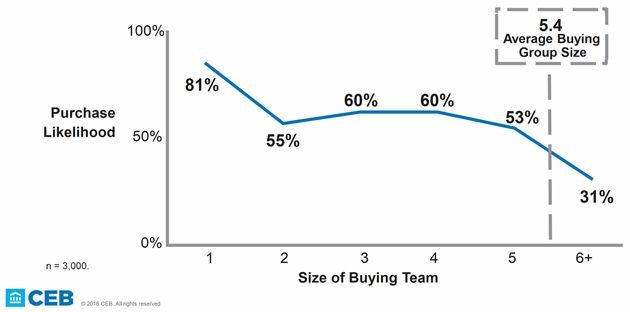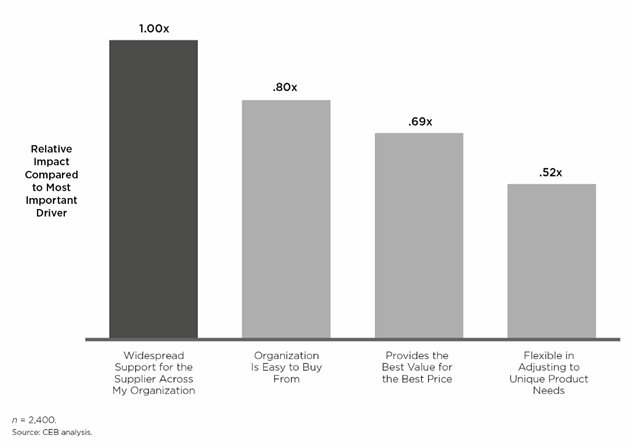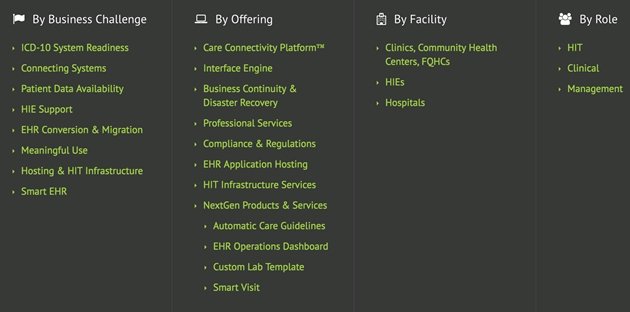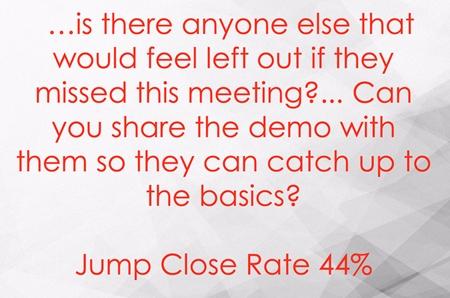As recently as five years ago, when selling into small-to-midmarket companies, 1-2 people were typically involved in the purchase decision. In recent years, that trend has shifted; now, three or more people must approve purchases, even those below $50,000.
Sophistication in technology, Big Data, readily accessible analytics, and increased corporate consolidation are some of the reasons for the change. Selling into marketing departments used to involve only marketing personnel—and, on occasion, the C-level or purchasing department for larger deal sizes. Now the COO, CIO or CTO must sign off on many marketing purchases.
That consensus-buying mentality has caused close durations to lengthen significantly. The trend of larger buying-group sizes applies not just to Marketing but across departments and industries.
Even more important than resulting in sales delays, larger buyer groups have negatively influenced the actual chance of a sale. In The Challenger Customer, Adamson, et al. surveyed 3,000 midmarket companies regarding buying patterns. They found purchase likelihood decreases from 81% with one stakeholder to less than 50% when the number of stakeholders approaches the average of 5.4:

Source: CEB, The Challenger Customer, 2015
In fact, CEB Group found that widespread support for a supplier across members of the organization has the highest impact on closing a deal:

Source: CEB, The Challenger Customer, 2015
Six Ways to Accelerate Deal Closure
So how do you get widespread support among a large buying group? Developing personalized content and serving it at the right time are proven ways to break through the ceilings imposed by bigger buying groups.
Here are six ways to implement customization into your marketing programs.
1. Personalize your website—even at a basic level
At the top of the funnel, it's important to customize marketing foundation pieces by buyer personas and business challenges. One example is to create website landing pages by challenge, industry, and persona. Healthcare IT vendor eMedApps (a client of ours at Clarity Quest Marketing) has a good version on its solutions landing page.
To keep the size of your content library reasonable, try to group buyers and challenges into logical segments.

2. Empower your internal champion at the prospect
Provide your champion with quality content tailored to his/her buying group. At Accelerate16, Matt Behrend, CEO of Consensus, shared that 80% of potential buyers don't feel they have enough data from vendors to sell the solution to internal constituents.
Ask internal champions exactly what they need to convince their colleagues. For example, the CFO may need to see a return-on-investment calculation, while the CIO requires an onboarding workflow with required technical resources. Many times I've simply been asked to chat with the CEO for 15 minutes.
3. Use video to reach all buyer personas
A potential buyer is often not willing to advocate for the product internally because of various fears. You can't always rely on the internal champion or first contact point to convince all stakeholders to purchase, so your sales and marketing teams have to be prepared to sell to the entire decision-making team. One way to do so is to send videos and demos personalized to individual buyer personas at various points during the sales process.
Consensus found that simply asking whether others should be involved and sending a personalized video to all constituents increased the close rate by 44%.

To keep down the number of videos you have to produce, consider not only the areas in which constituents are dissimilar but also those areas they have in common. For example, for our marketing agency, we decided introduction videos should be customized by vertical, but services video could be the same across verticals. In the introduction videos, we show the experience of our agency in the specific verticals. However, communicating the value propositions of our branding work was not different enough across verticals to warrant individual videos for each.
4. Learn to deal with delayed sales
In healthcare, technology purchases can take up to 24 months to close. Large buying groups often experience stalls in the sales process because of budget cycles, vacations, refocused priorities, or executive turnover. Delays are a problem because people forget up to 50% of content within five weeks of initially learning it.
Stay top of mind by sending customized content on a regular basis to all members of the buying group.
5. Understand how all your contacts at prospect and customer companies interrelate
We often see sales customer relationship management CRM systems in which contacts from the same organization have no posted relationships. Worse yet, various sales reps attempt to sell to the same company because the buyers work in different geographic areas. Sales and Marketing should make every effort to find the contact information of new team members and identify changes to the buying group structure. Social sites, such as LinkedIn, can also be valuable in determining corporate hierarchies and organizational charts.
6. Implement account-based marketing ( ABM)
By its very nature, account-based marketing requires content to be personalized by company and persona. To be successful, those executing ABM must thoroughly understand the prospect's industry, buyer journeys, job functions, and pain points by persona.
Adapt or Stagnate: Large Buying Groups Are Here to Stay
The size of buying groups is not expected to contract any time soon. In fact, with mergers and acquisitions on the rise, you can expect group sizes to increase. To decrease sales durations in this environment, it's vital to change from one-to-one selling and marketing to strategies focused on group behavior, such as personalized content and account-based marketing.




